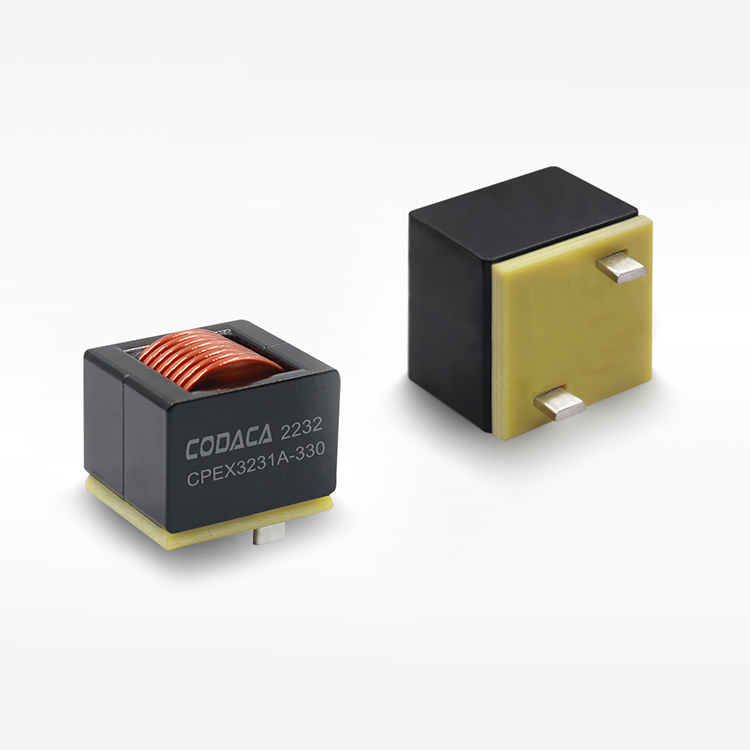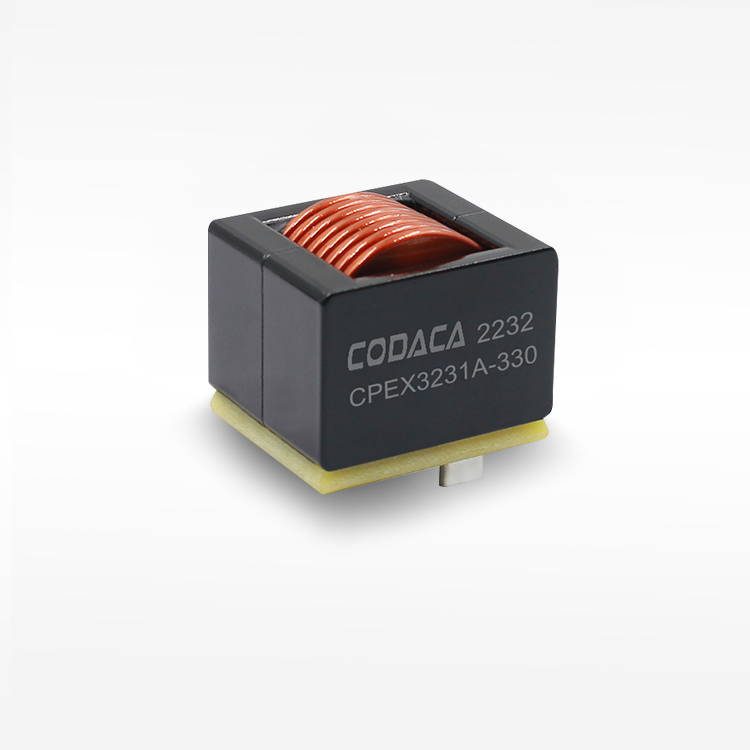Introduction
High current power inductors are essential passive electronic components that play a crucial role in energy management within electronic circuits. They function by storing energy in a magnetic field when electrical current flows through them, effectively contributing to the stability and efficiency of power supply systems. By managing energy storage and release efficiently, power inductors help in maintaining circuit performance and reliability.
In electronic circuits, inductors are critical for several functions, including filtering signals, storing energy, and maintaining current stability. They are indispensable in Applications where noise reduction is vital, such as in sensitive electronic equipment. Power inductors filter unwanted signals and noise, ensuring that only the desired electrical signals pass through, thus safeguarding the performance of delicate components. This makes them integral to the design of circuits where precision and stability are of the essence.
Key Factors in Choosing High Current Power Inductors for Circuits
When selecting high current power inductors, the inductance value plays a critical role in circuit functioning. The choice of inductance influences both energy storage and filtering capabilities, directly impacting the circuit's ability to handle varying current loads. For instance, a larger inductance value might help in smoothing current fluctuations, crucial for filtering applications. Conversely, smaller inductance values can result in higher ripple currents, potentially affecting transient response during load changes. Therefore, identifying the suitable range of inductance values is essential for each specific application to ensure optimal energy storage and signal interference reduction.
The current rating and saturation current of inductors are decisive in their performance capabilities. These parameters determine the maximum current an inductor can manage without losing efficacy or overheating. A product's saturation current rating indicates the point at which the inductive property diminishes significantly as the DC current increases. Understanding this threshold is crucial since surpassing it can lead to undesired circuit behavior due to reduced inductance, which is particularly risky for ferrite-based inductors with their sharp saturation characteristics.
DC resistance (DCR) and efficiency are intertwined aspects that affect power management and heat production in circuits. Lower DC resistance is desirable as it enhances inductor efficiency by minimizing power loss. The heating effect from current and voltage drop relates directly to the DCR value, making it vital to choose inductors with minimal resistance for improved power performance, especially in DC-DC applications where DCR might serve as a current sense path.

Temperature coefficients and the operating environment significantly influence inductor selection. Various materials used in inductors react differently to temperature variations, impacting the reliability and performance of the circuit. Inductors must maintain their operation within specified temperature limits to avoid performance degradation. Understanding the temperature coefficients and ensuring they align with the application's operating environment is vital to prevent overheating and ensure consistent inductor performance. Therefore, engineers should consider these factors along with inductance, current rating, and DC resistance when selecting power inductors for robust and reliable circuit designs.
Types of High Current Power Inductors
Understanding the different types of high current power inductors is crucial for selecting components that meet specific application needs. Wire-wound inductors are known for their robust construction and high inductance values, making them ideal for applications that require significant power handling. They are composed of copper or aluminum wire wrapped around a core, providing strong electromotive force capabilities. This design allows them to be highly effective in storing and transferring energy efficiently.
Multilayer inductors offer advantages in terms of compact size and low profile, which makes them suitable for high-frequency operations where space conservation is crucial. These inductors are built from multiple layers of conductive material stacked atop each other, allowing for miniaturization without sacrificing performance. They are prevalent in applications like smartphones and other portable devices where space is at a premium but performance cannot be compromised.
Toroidal inductors are distinguished by their doughnut-like shape that enhances magnetic properties while minimizing electromagnetic interference (EMI). The closed-loop design of toroidal inductors contains the magnetic field tightly within the core, reducing EMI and improving efficiency. This makes them particularly useful in applications where EMI could interfere with other circuit components, such as audio equipment and RF applications.
SMD (Surface-Mount Device) inductors are designed to be mounted directly onto the surface of printed circuit boards (PCBs), making them ideal for modern electronics that necessitate space-saving solutions. Their small size and ease of automated placement make them favorable for manufacturers seeking efficient production workflows.

Performance Specifications to Consider
When selecting a high-current power inductor, understanding Direct Current Resistance (DCR) is crucial, as it directly impacts energy losses in applications. DCR refers to the internal resistance of the inductor as DC current flows through it. A lower DCR is desirable because it minimizes heat generated and power loss, leading to higher efficiency. For instance, reducing DCR can improve the efficiency of power applications by up to 10%, according to industry reports. Therefore, it is critical to consider DCR specifications to ensure optimal inductor performance.
Another key aspect to be aware of is the phenomenon of inductance drop, which can significantly affect circuit performance and reliability. Inductance drop occurs when the inductance value decreases with increased current or frequency, potentially causing the inductor to fail in maintaining the desired performance in the circuit. Engineers should evaluate metrics like the saturation current, which indicates the current level at which inductance falls by a specific percentage (usually 20% or 30%). Monitoring saturation current levels helps in choosing an inductor that will remain stable under varying conditions.
Examining the heat rating current and thermal properties is also essential for assessing an inductor's capacity to operate under heat stress while maintaining efficiency. The heat rating current specifies the DC current level required to elevate the inductor's temperature by a defined amount (commonly 40°C). Accurate thermal management involves understanding this parameter in conjunction with external factors such as PCB layout, airflow, and component proximity. By considering these specifications, designers can ensure not only the reliability but also the efficiency of current power inductors in their applications.
Applications of High Current Power Inductors
High current power inductors play a critical role in power supply circuits by smoothing out voltage fluctuations and stabilizing outputs during load changes. When a power supply's demand evolves—often abruptly—inductors help maintain steady voltage levels, ensuring that the system functions reliably without interruptions. This results in improved performance and reduced risk of component damage due to voltage spikes.
In DC-DC converters, inductors are indispensable for converting voltage levels efficiently while facilitating effective power transfer. Their ability to store and discharge energy makes them crucial for maintaining the desired voltage output, whether stepping up or stepping down the voltage. This ensures highly efficient and stable power conversion, which is vital in various electronic applications ranging from mobile devices to industrial equipment.
Moreover, inductors are pivotal in filtering applications, especially in removing unwanted frequencies and maintaining the integrity of desired signals. They block high-frequency noise that can interfere with the operation of sensitive components, facilitating cleaner power supply and enhancing overall system performance. Integrating these inductors into the design ensures the delivery of precise and reliable power in electronic devices.
Testing and Validating Inductor Performance
Testing and validating inductor performance is crucial for ensuring their reliability and efficiency in applications. The process begins with prototype testing of inductors under real-world conditions to gauge their performance. This approach not only simulates actual operating environments but also reveals potential issues early in development. Various case studies demonstrate the impact of real-world testing, showing that inductors consistently perform better when initially subjected to thorough prototype evaluations.
Performance measurement and analysis are integral parts of inductor testing. Key metrics, including inductance value, saturation current, and thermal characteristics, are critical for determining suitability in specific applications. Tools and techniques such as LCR meters, oscilloscopes, and thermal imaging help in assessing these parameters accurately. These assessments are pivotal in making informed decisions regarding component integration, as they impact the device's overall efficiency and stability.
Compliance testing ensures that inductors abide by industry standards and regulations, playing a critical role in product approval. Regulatory bodies provide guidelines that industries must follow to maintain quality and safety standards. By ensuring compatibility with these requirements, manufacturers guarantee that their inductors are safe for use across various sectors and applications. Compliance testing, therefore, not only boosts consumer trust but also supports widespread adoption of inductors in technological advancements.
FAQ
What are high current power inductors used for?
High current power inductors are used in electronic circuits to store energy, filter signals, and maintain current stability. They play a vital role in applications such as power supply circuits, DC-DC converters, and filtering noisy signals in sensitive electronic equipment.
How do I choose the right high current power inductor?
Choosing the right high current power inductor involves considering key factors like inductance value, current rating, DC resistance, temperature coefficients, and the operating environment. These elements influence the component's ability to handle current, efficiency, and thermal management.
Why is DC resistance important when selecting an inductor?
DC resistance (DCR) is important because it affects power loss and heat generation in an inductor. Lower DCR means higher efficiency because it minimizes energy loss and heat, which is critical for maintaining the performance of power applications.
What types of high current power inductors are available?
Types of high current power inductors include wire-wound inductors, multilayer inductors, toroidal inductors, and SMD inductors. Each type has unique characteristics suitable for different applications, such as high inductance, compact size, low electromagnetic interference, and ease of PCB mounting.



